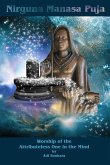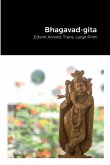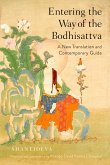This book describes the steps required to perform Lord Prajña-Dak¿i¿¿m¿rti p¿j¿ (worship). It contains Lord Prajña-Dak¿i¿¿m¿rti Nity¿ P¿j¿, Sandhy¿ P¿j¿, M¿l¿ Mantra, and two articles from Pujya Swami Dayananda Saraswati. "Lord Dak¿i¿¿m¿rti is Lord ¿iva's manifestation as the first teacher. It is said in the Pur¿¿as that Lord Brahma, the creator, in the beginning of creation created out of his mind four progenies known as the Sanatkum¿ras: Sanaka, Sanandana, San¿tana, and Sanatkumara and asked them to assist him in the task of creation. However, they were renunciates by nature and, possessed a keen desire to know the truth. So, they set out in the northern direction in search of truth and performed penance. Pleased with them, Lord ¿iva appeared before them as a teacher, seated under a banyan tree, facing the south, and imparted the knowledge of Brahman (Brahma-vidy¿)...Dak¿i¿¿ means south and m¿rti is form. So Dak¿i¿¿m¿rti is one who is facing the south. The teacher is facing south while imparting the knowledge and the disciples are facing the north. In the Vedic tradition, the northern direction associated with knowledge, and freedom. The Sanskrit word for north is uttara which literally means "to rise and cross over." Therefore, the word symbolizes rising above the senses and crossing the cycle of birth and death (säs¿ra)" (Swami Dayananada Saraswati, 1990).








